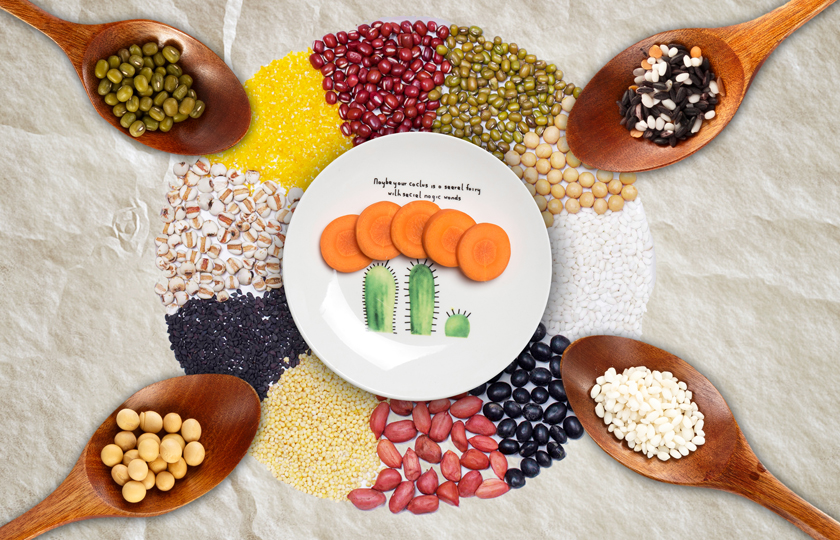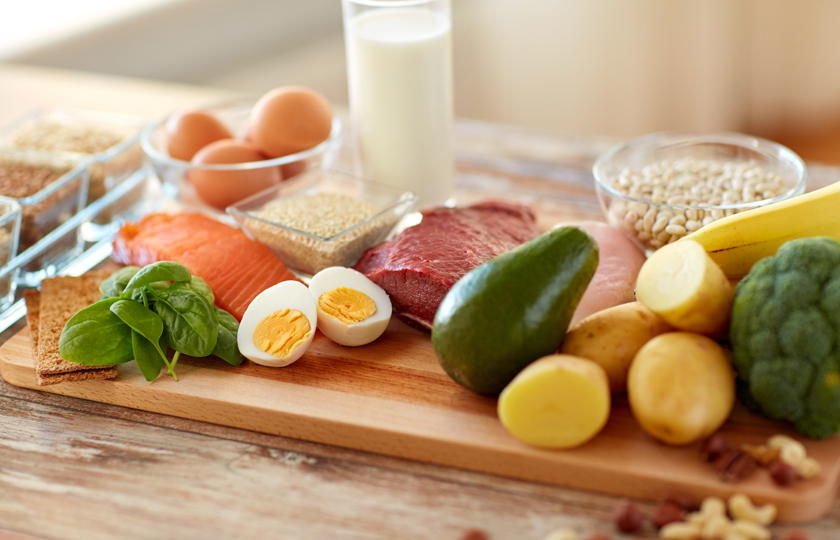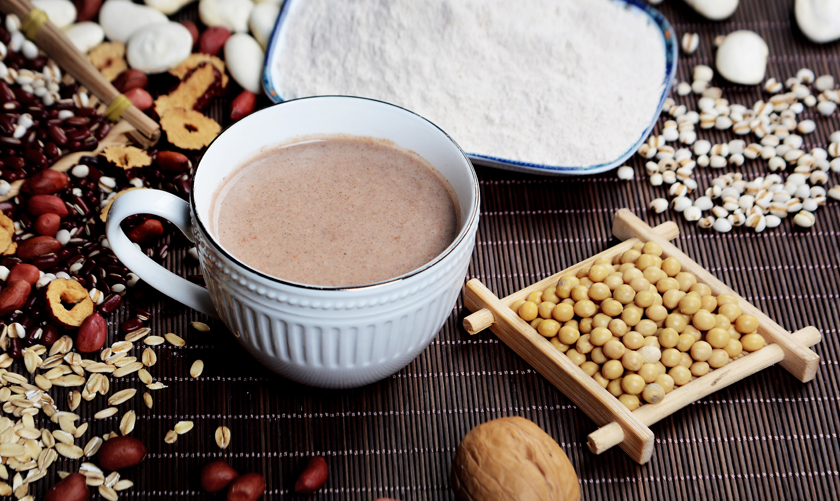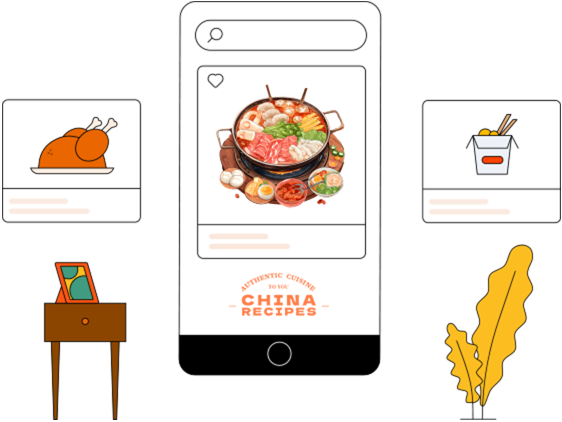What Cereals Are Lowest in Calories?
 Not all grains are the enemy of staples! Today, let’s go through the low-calorie cereal products one by one, so you’ll never have to worry about what to eat for breakfast again! Let’s take a look at which cereals are lowest in calories.
Not all grains are the enemy of staples! Today, let’s go through the low-calorie cereal products one by one, so you’ll never have to worry about what to eat for breakfast again! Let’s take a look at which cereals are lowest in calories.
What are low-calorie cereals?
Low-calorie cereals refer to grains that contain fewer calories per 100 grams. Typically, they have the following characteristics:
Low in calories: Usually, they have between 100-150 kcal per 100 grams (when cooked).
High in fiber: Rich in dietary fiber, which increases satiety and delays hunger.
Low glycemic index (GI): Digested and absorbed slowly, preventing a rapid rise in blood sugar.
Nutrient-rich: Provide vitamins, minerals, antioxidants, and other nutrients.
Common types of low-calorie cereals
1.Plain Oatmeal (unsweetened)
Features: Oats are high in dietary fiber, low in calories, and have strong satiety.
Suggested way to eat: Soak in hot water or low-fat milk, and add a small amount of fruit (e.g., blueberries, strawberries) to enhance the flavor.
Calories per 100g: About 68 kcal (uncooked).
2.Whole Wheat Cereal (unsweetened)
Features: Made from whole grains, rich in fiber, and low in calories.
Suggested way to eat: Pair with low-fat yogurt or milk, and add a small amount of nuts or fruit.
3.Quinoa Cereal
Features: Quinoa is a high-protein, low-calorie grain, perfect for breakfast.
Suggested way to eat: Cooked and served with milk or yogurt, and topped with fruit.
Calories per 100g: About 120 kcal (cooked).
4.Brown Rice Cereal (unsweetened)
Features: Brown rice cereal is healthier than regular rice flakes and has lower calories.
Suggested way to eat: Mix with milk, and add a little honey or fruit.
Calories per 100g: About 80-90 kcal.
5.Wheat Germ
Features: Wheat germ is nutritious, low in calories, and perfect for adding to breakfast.
Suggested way to eat: Sprinkle on yogurt, oatmeal, or salads.
Calories per 100g: About 360 kcal (but the actual calories are lower due to smaller serving size).
6.Unsweetened Cornflakes
Features: Cornflakes are inherently low in calories, but choose the unsweetened version.
Suggested way to eat: Pair with low-fat milk or yogurt.
Calories per 100g: About 80-90 kcal.
7.Chia Seed Pudding
Features: Chia seeds are rich in fiber and protein, low in calories.
Suggested way to eat: Soak chia seeds in low-fat milk overnight to form a pudding, and add fruit.
Calories per 100g: About 60-70 kcal.
8.Unsweetened Rice Bran Flakes
Features: Rice bran flakes are high in fiber and low in calories.
Suggested way to eat: Soak in milk or yogurt, and add a little fruit.
Calories per 100g: About 70-80 kcal.
9.Unsweetened Buckwheat Cereal
Features: Buckwheat cereal is low in calories and high in fiber.
Suggested way to eat: Soak in hot water or milk, and add a little honey or fruit.
Calories per 100g: About 80-90 kcal.
10.High-Fiber Wheat Bran Cereal
Features: Made from the outer layer of wheat bran, rich in dietary fiber, low in calories, and highly filling.
Suggested way to eat: Soak in low-fat milk or plant-based milk, and add a little fruit (e.g., bananas, blueberries) to enhance flavor.
Calories per 100g: About 40-60 kcal (unsweetened version).
Healthy breakfast pairing suggestions
Oatmeal + Milk/Yogurt + Fruit: Pair oatmeal with low-fat milk or yogurt, and add a little fruit (e.g., blueberries, bananas) for energy and increased satiety.
Whole Wheat Cereal + Nuts: Pair whole wheat cereal with a small amount of nuts (e.g., almonds, walnuts) to add protein and texture.
High-Fiber Wheat Bran Cereal + Skim Milk: Pair high-fiber wheat bran cereal with skim milk for a quick and easy breakfast, perfect for busy mornings.

Comparison of calories in common grains
Calories per 100 grams of edible portion:
1.Rice (white rice)
Uncooked: About 365 kcal
Cooked: About 130 kcal
Features: Easy to digest, a staple food in many regions.
Nutrients: Primarily carbohydrates, small amounts of protein, low in fiber.
2.Brown rice
Uncooked: About 370 kcal
Cooked: About 111 kcal
Features: Retains bran and germ, more nutritious than white rice.
Nutrients: High in fiber, B vitamins, magnesium, and selenium.
3.Oats
Uncooked: About 389 kcal
Cooked: About 68 kcal
Features: High in fiber, low in calories, suitable for breakfast.
Nutrients: High in beta-glucan (soluble fiber), protein, magnesium, and iron.
4.Quinoa
Uncooked: About 368 kcal
Cooked: About 120 kcal
Features: High in protein, contains all essential amino acids, gluten-free.
Nutrients: High in protein, fiber, iron, magnesium, and manganese.
5.Millet
Uncooked: About 378 kcal
Cooked: About 119 kcal
Features: Easy to digest, suitable for infants and the elderly.
Nutrients: High in B vitamins, magnesium, phosphorus, and antioxidants.
6.Corn
Uncooked: About 365 kcal
Cooked: About 86 kcal
Features: Sweet flavor, often used as a staple or snack.
Nutrients: High in vitamin C, lutein, zeaxanthin, and fiber.
7.Barley
Uncooked: About 354 kcal
Cooked: About 123 kcal
Features: High in fiber, often used in soups or stews.
Nutrients: High in beta-glucan, selenium, manganese, and B vitamins.
8.Buckwheat
Uncooked: About 343 kcal
Cooked: About 92 kcal
Features: Gluten-free, suitable for those allergic to wheat.
Nutrients: High in antioxidants (such as rutin), protein, and fiber.
9.Job's tears (Coix seed)
Uncooked: About 357 kcal
Cooked: About 120 kcal
Features: Diuretic, commonly used in Traditional Chinese Medicine for health.
Nutrients: High in fiber, B vitamins, magnesium, and phosphorus.
10.Black rice
Uncooked: About 341 kcal
Cooked: About 110 kcal
Features: Rich in anthocyanins, strong antioxidant properties.
Nutrients: High in anthocyanins, iron, zinc, and vitamin E.
11.Red rice
Uncooked: About 356 kcal
Cooked: About 112 kcal
Features: Highly nutritious, rougher texture.
Nutrients: High in iron, zinc, B vitamins, and fiber.
12.Sorghum
Uncooked: About 339 kcal
Cooked: About 110 kcal
Features: Drought-resistant, often used for brewing or as animal feed.
Nutrients: High in protein, fiber, iron, and antioxidants.
13.Wheat
Uncooked: About 340 kcal
Cooked: About 110 kcal
Features: Mainly used for making flour, bread, etc.
Nutrients: High in B vitamins, iron, magnesium, and fiber.
14.Whole wheat flour
Uncooked: About 340 kcal
Cooked: About 110 kcal
Features: Retains bran and germ, more nutritious.
Nutrients: High in fiber, B vitamins, iron, and magnesium.
15.Rye
Uncooked: About 338 kcal
Cooked: About 110 kcal
Features: High in fiber, often used in making rye bread.
Nutrients: High in fiber, manganese, magnesium, and B vitamins.
16.Buckwheat flakes
Uncooked: About 343 kcal
Cooked: About 92 kcal
Features: Gluten-free, suitable for making porridge or baking.
Nutrients: High in antioxidants, protein, and fiber.
17.Quinoa flakes
Uncooked: About 368 kcal
Cooked: About 120 kcal
Features: High in protein, suitable for breakfast or snacks.
Nutrients: High in protein, fiber, iron, and magnesium.
18.Oat bran
Uncooked: About 246 kcal
Cooked: About 40 kcal
Features: High in soluble fiber, helps lower cholesterol.
Nutrients: High in beta-glucan, B vitamins, and magnesium.
19.Pearl barley
Uncooked: About 354 kcal
Cooked: About 123 kcal
Features: Often used in soups or stews, soft texture.
Nutrients: High in fiber, selenium, manganese, and B vitamins.
20.Pasta
Uncooked: About 371 kcal
Cooked: About 158 kcal
Features: Made from durum wheat, chewy texture, suitable for various sauces.
Nutrients: High in carbohydrates, small amounts of protein, low in fat, contains B vitamins and iron.
21.Whole wheat bread
Uncooked (by flour): About 340 kcal
Cooked (finished bread): About 246 kcal (per 100g)
Features: Made from whole wheat flour, retains bran and germ, highly nutritious.
Nutrients: High in fiber, B vitamins, iron, magnesium, and zinc.
22.White bread
Uncooked (by flour): About 364 kcal
Cooked (finished bread): About 265 kcal (per 100g)
Features: Made from refined flour, soft texture, but lower in nutrients.
Nutrients: Primarily provides carbohydrates, small amounts of protein, low in fiber, some products may be fortified with vitamins and minerals.
Note:
The calories after cooking typically decrease significantly, as grains absorb water during cooking, increasing in volume but the total calories remain unchanged.
The data is an average value, actual calories may vary depending on variety, origin, and cooking method.

What is the best cereal to eat for weight loss?
The cereals for weight loss must be low in calories, high in dietary fiber, nutritious, and provide lasting satiety.
Here are a few recommended cereals:
1.Oats
Nutritional Features: Oats are rich in soluble fiber (beta-glucan), which helps lower cholesterol, control blood sugar, and provides strong satiety.
Calories: 100g of raw oats contain about 389 kcal, but the calories decrease when cooked due to the added water.
Suitable for: Breakfast, can be paired with milk or fruits.
2.Brown Rice
Nutritional Features: Compared to white rice, brown rice retains more nutrients, including dietary fiber, B vitamins, and minerals, which are more beneficial for controlling blood sugar and weight.
Calories: 100g of brown rice contains about 370 kcal.
Suitable for: Main dish, can be paired with vegetables and protein.
3.Barley
Nutritional Features: Barley is rich in dietary fiber, which promotes digestion, lowers cholesterol, and is also rich in B vitamins and minerals.
Calories: 100g of cooked barley contains about 28g of carbohydrates, with lower calories.
Suitable for: Suitable for porridge, can be added to soups or salads.
4.Quinoa
Nutritional Features: Quinoa is a “nutritional star” among whole grains, rich in protein, dietary fiber, vitamins, and minerals, making it an ideal choice for vegetarians and fitness enthusiasts.
Calories: 100g of quinoa contains about 368 kcal.
Suitable for: Can be used as a main dish, can be paired with salads or vegetables.
5.Whole Wheat Bread
Nutritional Features: Whole wheat bread retains more bran and germ, making it rich in dietary fiber and nutrients, which are beneficial for controlling blood sugar and digestion.
Calories: 100g of whole wheat bread contains about 246 kcal.
Suitable for: Breakfast or as sandwich bread.
Health Benefits of Low-Calorie Grains
Helps control weight: Low-calorie, high-fiber properties help reduce total calorie intake.
Stabilizes blood sugar: Low glycemic index helps avoid blood sugar fluctuations, suitable for diabetics.
Promotes digestion: High fiber content aids in improving gut health and prevents constipation.
Provides lasting energy: Complex carbohydrates release energy slowly, preventing hunger.
How to choose low-calorie grains?
Prioritize whole grains (such as brown rice, oats), avoid refined grains (such as white rice, white bread).
Pay attention to cooking methods, avoid adding high-calorie seasonings (such as oil, sugar).
Vary your combinations to ensure a balanced nutrient intake.























